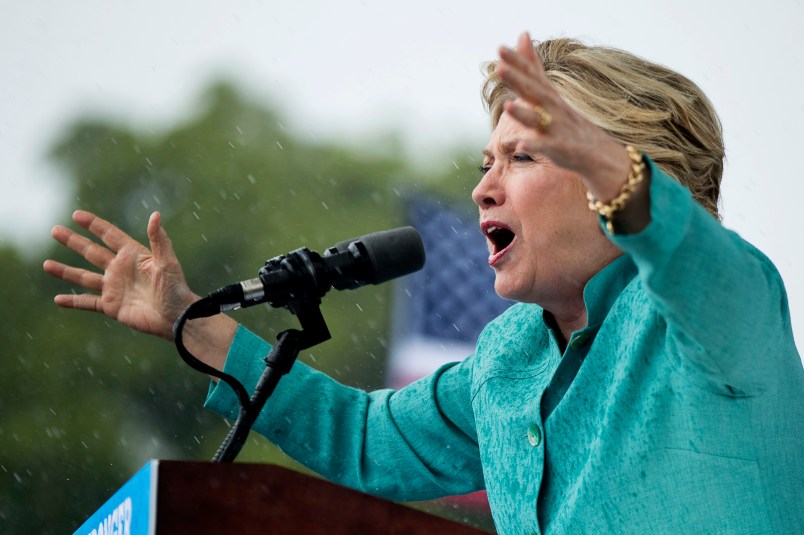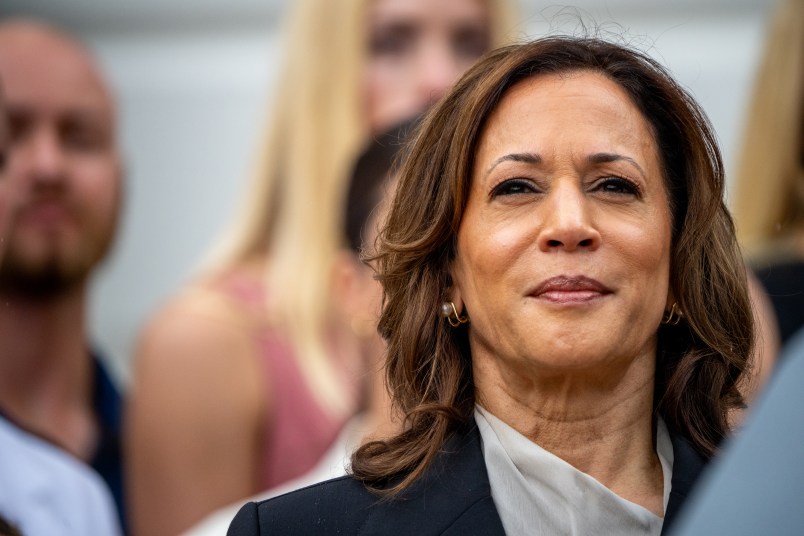Let me share a basic premise with you. Right or wrong, it’s informed my understanding of the race for months. The Clinton campaign has better information about the race than the media (i.e., public polls) or the Trump campaign.
This doesn’t really help us civilians since we can’t know what their numbers tell them. But here’s why I think it.
Private campaign polling and public media polling follow significantly different methodologies. This difference has become more exaggerated over recent years. Premium media polling has stayed relatively the same – live caller surveys on landlines and cell phones. But it’s also moved in the direction of online polling which may be or may turn out to be (there’s no one standard methodology) as good as phone polling but has more methodological and quality variation and less of a track record. Private campaign polls generally work from voter lists – not random number dialing. They are a lot more expensive and rely much more on various sorts of data modeling. The private polls have more increasingly in this direction over the last few cycles while public polling raise remained largely in place.
To avoid getting myself in needless arguments and – more than that – to be as precise as possible, it is not so much that private campaign polls are more accurate as they are simply different. They are designed for a different purpose. A media poll is fundamentally designed to tell you who is winning and additional details about which sorts of voters are thinking different things. Campaign polls are 100% designed to give you information which can enable you to do things to win. That’s a big difference in how you collect and present data. As it happens, I think they’re also more accurate. Most political professionals in recent years seem to share this opinion.
(To avoid any confusion, none or very little of what I’m describing here applies to those occasions when a campaign or party committee releases a campaign poll. The methodological difference don’t necessarily apply. And they’re only going to release numbers if they’re good.)
What we’ve also seen in the last two presidential cycles is that Democrats have a significant advantage in technology, methodologies and more, both in polling, data analysis and what you do with the data. Again, this opinion is broadly shared by professionals on both sides of the aisle – just how much ahead or whether the lead is holding is up for the discussion, not the Dems’ advantage. This was particularly so in 2012 when it turned out the Obama team had a small but significantly more accurate prediction of the outcome than the aggregate of public polls. Meanwhile, the Romney campaign significantly missed the outcome – missed it even relative to the public polls. The Romney miss was probably a mix of Dems simply being better at this and some one time giving in to wishful thinking.
The next part of the equation is that the Clinton campaign has largely inherited the Obama data and polling brain trust. Not necessarily the same people. But the same strategies, inherited knowledge, technology, and a lot of the people, etc. Based on this I’m operating on the assumption that the Clinton campaign has access to comparable information as the Obama campaign had in 2012 – and a comparable ability to act on it.
Okay, so where are we?
That’s why I think I think the people running the Clinton campaign have access to more accurate information than the public polls and the media and the Trump campaign. And to be clear, I’m not talking about night and day differences. I’m talking about probably quite small potential differences but differences with a granularity of data that might give clarity into dangers or opportunities that are hard to see with the data we have available to us. Is Ohio still possible? Is Michigan really in danger? I bet they have better information – whatever it’s telling them – than we do.
What about the Trump campaign? Trump’s Razor might settle this easily enough. But my assumption is that the Trump campaign has inferior information a) because Republicans were already a bit behind Democrats, b) because of the chaos of the Trump campaign, uncertain coordination with the RNC and just getting late to building anything they must be at some disadvantage and c) because the culture of the Trump campaign does not strike me as one that would have prioritized data, field, polling in the way recent Democratic campaigns have. (At least on the field front, we pretty much know they’re behind.) Again, a number of assumptions packed in there. But I think this is accurate.
So where does that leave us?
In most respects it’s a totally abstract point since we don’t know what they’re seeing. And they have zero reason to tell us. If it looks bad, they’re not going to say so. If it looks good they have other reasons not to. Campaigns can also spin themselves. The Romney camp clearly did that in 2012.
Where it’s interesting to me is seeing what we can infer from actions – specifically campaign buys and use of the candidate’s time. Any smart campaign professional will tell you that time is the fundamental asset any campaign has. Money you can probably get more of. You may have a lot more money than you’re opponent. You can’t get more time. Each candidate has the same amount.
One thing that is curious to me is that the Clinton campaign must think they are still in the hunt in Ohio – otherwise they wouldn’t be spending the candidate’s or key surrogates time there. That surprises me. Because they seem to be consistently about four points back. I have assumed for weeks that Clinton will lose Ohio. If you see a tie in a state or near tie, it’s entirely credible that a clearly superior field operation can win that on the ground. If you’re back 4 or 5 points that’s not likely.
I was also curious to see Clinton in Arizona a few days ago. But I think that trip was likely planned before the Comey Letter. So her team may have felt more confidence in pushing for reach states.
Still another thing I’d like to know is what they are seeing or saw in Nevada. Nevada is a chronically hard to poll state – at least for media pollsters. It’s a mix of a highly transient population and a large Hispanic vote which pollsters seem to have trouble accessing. Every numbers person I follow says that the early vote shows an advantage for the Democrats which is close to insurmountable for the Republicans. Could they be wrong? Sure. But they’re the experts on this kind of stuff. The problem is that the public polls say something very different.
I’m pretty confident Clinton wins Nevada – which is key if New Hampshire is up for grabs. But did the Clinton folks see that in advance? Did they have some visibility into the situation in Nevada and Arizona and Ohio that we’re not seeing? Maybe. It could also be that Nevada is just unique, sui generis. Like I said, pollsters have always had a hard time with it. If they are seeing what seems like a big jump in Hispanic participation that could explain their focus on Arizona. But that would be much less relevant in Ohio.
Is it possible they could be deploying time and money in Ohio to fool us, keep enthusiasm up even though it seems like a longshot? In other words, could they be spinning us with their actions not their words? Maybe a bit at the margins. But mainly I think the answer is ‘no’. The candidates time is too critical.
In any case, these are just random thoughts, sharing some of my assumptions about the race, things I’d very like to know but don’t.








